ALSO IN THE NEWS

Somalia: Original Bevin plan welcomed and 1897 and 1954 treaties repudiated
By Ambassador Mohamed Osman Omar
It is indeed a great pleasure for me to be here at SOAS tonight among you, distinguished and eminent scholars, for the launching of the book MILK AND PEACE, DROUGHT AND WAR published in honour of renowned Anthropologist, Prof. I.M. Lewis.
The publication of this book is further recognition of Prof. I.M. Lewis, who has also been honoured in 2003 by the Commission on Nomadic Peoples of the International Union of Anthropological and Ethnological Sciences with its ‘Lifetime Achievement Award’ for his “outstanding contribution to the study of nomadic peoples”.
Even though the Somali people’s culture is so rich and their history so deep, unless scholars like you put them in writing, whether in book form, essays or articles, all those important treasures might dissipate and not be preserved for the future generations; and surely, in the long run, they might even be forgotten. The Somalis rightly say: “Wixii Qoran Baa Quruumo Haree, Maxuu Hadal Qiimo Leeyahay? (Literal translation: What is written remains centuries; what value does talk has? Or commonly said: words fly away, writings remain).
The Books and the Articles on the culture of the Somali society and the history of the country written by Prof. Lewis, have not only remained on our shelves, but reached far and wide and are read by many scholars and taught many students of African Studies in various parts of the world. In fact, in the citation for the presentation of the Award on behalf of the I.U.A.E.S., Philip Carl Salzman, Chair, Awards Committee, said:
“It is through the work of Professor I. M. Lewis that we have learned most fully and most deeply about the Somali nomads, that “fierce and turbulent race of Republicans".
The above description sounds like the character of the Irish race. Probably it was for that reason that the Somalis were given the nickname “the Irish of Africa”.
When in 1993, the then President of Ireland, Mary Robinson, returned from Somalia after a humanitarian mission, she wrote a book called ‘A Voice for SOMALIA’. At that time, as I was the Somali Ambassador to India, the Charge d’Affairs of the Embassy of the Republic of Ireland in New Delhi, sent me a copy of the book. In it, the former president of Ireland says about the Somalis:
“They call themselves the Irish of Africa and certainly found them a very likeable, dignified and very resourceful people. They want to help themselves”.
I thought, being the President of Ireland, she would be able to give an answer to my curious question. I wrote a letter to her through the Embassy of Ireland in New Delhi and said,
‘Somalis did not call themselves the Irish of Africa. Someone else described them as such. I would be grateful if Your Excellency would be kind to enlighten me about the comparison between the Irish and the Somalis and how this nickname came about.’
Unfortunately, I am yet to be enlightened on this enigmatic description which, I am sure, will be discovered, sooner or later, by scholars like you.
Whether these are the reasons or not I found similarities or coincidence in the history of the struggle of the Somali and the Irish peoples against the British administrations in their respective countries during the 19th century.
In Somalia, Sayyid Maxamed Cabdulle Xasan, started his liberation movement in 1899 telling the British authorities in Berbera, ‘I wish to rule my own country and protect my own religion’.
Meanwhile, in Ireland, in the same year, 1899, Arthur Griffith, a Dublin journalist, started a weekly newspaper called ‘The United Irishmen’ in which he advised the people of Ireland to be more self-reliant.
Incidentally, both movements ended in 1921, although in two different circumstances. In Ireland, the conflict ended with the signature of the Anglo-Irish Treaty of 6 December 1921 and in Somalia with the tragic death of the Sayyid Maxamed in December 1921, in the occupied territory of Imey, after being forced to evacuate his Taleh Fort, following air attacks by the British.
Distinguished Scholars, Students and friends,
Once I believed that history is written as a true and accurate record of events, free from personal emotions or biased in favour of national interest. But unfortunately what I have noticed was contrary to that notion. Here I am referring to an official catalogue of the aircraft ‘Havilland’ n. 1164 (1996 Squadron/Signal, Publications) published by the Royal Air Force (RAF) Museum in London.
The catalogue says:
“The last RAF D.H.9s to see action were the twelve aircraft serving with “Z Force”, a British unit operating with the Camel Corps against the “Mad Mullah” in Somaliland for three weeks in January and February of 1920. Bombing missions by D.H.9s led directly to the Mullah’s capture.”
That is a misinformation. Because, according to a letter dated 31 December 1921, sent to the Foreign Office in London, the British Legation in Addis Ababa reported among other things:
“The promised provisions were not given, and the Mullah sent one of his brothers and a follower, Abdi Sheikh, to ask the Fitaurari for food. The latter, acting on the orders of the central government, threw these envoys into chains. Sickness and famine fell on the Mullah’s camp. In December he died; his death was caused by bleeding and vomiting blood. He was buried in a hut at Goanneh.”
I mention this because, since the Somalis are in difficult moment in their life, politically and socially, I hope that scholars’ lectures, writers’ book and journalists’ articles reflect the truth and convey positive and constructive messages and avoid divisive ideas based on personal emotion in order not to aggravate the already volatile situation in the country.
Distinguished Scholars and friends, ladies and gentlemen,
I belong to the generation who had the chance of witnessing the independence of former British Somaliland on 26 June, 1960, and former Italian Somalia on 1 July, 1960 and their union forming the young republic of Somalia in 1960. These were only two parts of the missing Somali territories and I hope the rest will also join. I am still, as some people call me, “obsessed” to see that happen someday.
I wish that my fellow Somalis, wherever they may be, to remember the proverb: “Far Keligeeda Fool ma Dhaqdo”. (A single finger cannot wash face).
It was the British Foreign Secretary, Ernest Bevin, who proposed the Somali territories to be united in 1946 and the creation of Greater Somaliland.
Prior to the announcement of his famous ‘Bevin Plan’ at the British House of Commons on 4 June 1946, the British Foreign Secretary made his original proposal at a meeting of the Prime Ministers held in London on 28 April 1946.
According to the minutes of the meeting, marked TOP SECRET, Bevin proposed the following:
“Italian Somaliland, together with British Somaliland, the Ogaden and the Reserved Areas, to be placed under international trusteeship with the United Kingdom as Administering Authority”.
That proposal was clear and devoid of ambiguity. However, barely five weeks later, addressing the British House of Commons, on 4 June 1946, the Foreign Secretary presented a different version in which he also involved Ethiopia, a country to which Britain illegally gave Somali territories in 1897, by saying:
“We proposed that British Somaliland, Italian Somaliland and the adjacent part of Ethiopia, if Ethiopia agreed, should be lumped together as a trust territory …” (Emphasis added)
There must have been strong pressure – between 28 April and 4 June 1946 - from other powers that forced his departure from the original proposal to the new that gave Ethiopia a say on the matter, although Bevin publicly mentioned only the criticism of Molotov, Russian Foreign Minister when he said:
“But what attracted M. Molotov’s criticism was, I am sure, that I suggested that Great Britain should be made the administrating authority. Was this unreasonable?”
Besides changing his original proposal, Bevin also refrained from presenting the proposal to the Paris Conference. However, despite that, Bevin’s sympathy must have been with the Somalis. He told the delegates:
“I hope the deputies at the Paris Conference will now consider a Greater Somaliland more objectively”.
Had the original proposal of Bevin to the Prime Ministers’ meeting not been foiled by the enemies of the Somali unity, all Somali territory illegally given to Abyssinia in 1897 by the British would have returned to where it lawfully belonged: Somalia.
Doubts on the validity of the Anglo-Ethiopia Treaty of 1897, according to which Britain handed over the territory known as Ogaden to Ethiopia, was expressed by the then Secretary of State for the Colonies, Alan Lennox-Boyd, at the British House of Commons’ debate on 23 February, 1955, who said:
“I think that in many ways the 1897 Treaty with Ethiopia was unfortunate, but it suffered from our limited knowledge of Somaliland at the time and we must see it against a background of that knowledge and of the expansionist tendencies of Ethiopia in 1897.”
During the debate, he also said:
“I regret the Treaty of 1897 but, like much that has happened before, it is impossible to undo it”.
Meanwhile, about the Agreement regarding the Haud and Reserved Areas, concluded between Ethiopian Government and Her Majesty’s Government in the United Kingdom on 29th November, 1954, and supposed to come into force, on 28 February 1955, Francis Bowles, Deputy Chairman of the Ways and Means, said during the same debate at the House of Commons:
“The Treaty comes into force in about seven days' time, Mr. Speaker. It has never been ratified by this House. What opportunity are we to have to discuss it? If the House did not like it, the Government would fall, quite apart from whether they are right or wrong in international law”.
I would be grateful if anyone of you would kindly let me know if the above Treaty has, in fact, been ratified by the British House of Commons at its subsequent meetings.
If Germans are united; If Vietnams are united, if Yemenis are united and if the Koreans talk, from time to time, of unity, despite all the problems that exist between them, why are we so predisposed to believe that division and dismemberment are in our best interest and unity is our adversary?
Finally, I would like to wish Prof. I.M. Lewis, all the best.
I thank you for your kind attention.
Ambassador Mohamed Osman Omar
Mohamed Osman Omar, former Ambassador of Somalia to various countries including India, former Yugoslavia and the Sudan and as non-resident Ambassador to Sri Lanka and Singapore, was on May 28, 2010, among the speakers at the School of Oriental and African Studies (SOAS), University of London, on the occasion of the launching of a new book “MILK AND PEACE, DROUGHT AND WAR” published in honour of Prof. I. M. Lewis.
Following is the full text of the speech delivered by Ambassador Mohamed Osman Omar:
It is indeed a great pleasure for me to be here at SOAS tonight among you, distinguished and eminent scholars, for the launching of the book MILK AND PEACE, DROUGHT AND WAR published in honour of renowned Anthropologist, Prof. I.M. Lewis.
The publication of this book is further recognition of Prof. I.M. Lewis, who has also been honoured in 2003 by the Commission on Nomadic Peoples of the International Union of Anthropological and Ethnological Sciences with its ‘Lifetime Achievement Award’ for his “outstanding contribution to the study of nomadic peoples”.
Even though the Somali people’s culture is so rich and their history so deep, unless scholars like you put them in writing, whether in book form, essays or articles, all those important treasures might dissipate and not be preserved for the future generations; and surely, in the long run, they might even be forgotten. The Somalis rightly say: “Wixii Qoran Baa Quruumo Haree, Maxuu Hadal Qiimo Leeyahay? (Literal translation: What is written remains centuries; what value does talk has? Or commonly said: words fly away, writings remain).
The Books and the Articles on the culture of the Somali society and the history of the country written by Prof. Lewis, have not only remained on our shelves, but reached far and wide and are read by many scholars and taught many students of African Studies in various parts of the world. In fact, in the citation for the presentation of the Award on behalf of the I.U.A.E.S., Philip Carl Salzman, Chair, Awards Committee, said:
“It is through the work of Professor I. M. Lewis that we have learned most fully and most deeply about the Somali nomads, that “fierce and turbulent race of Republicans".
The above description sounds like the character of the Irish race. Probably it was for that reason that the Somalis were given the nickname “the Irish of Africa”.
When in 1993, the then President of Ireland, Mary Robinson, returned from Somalia after a humanitarian mission, she wrote a book called ‘A Voice for SOMALIA’. At that time, as I was the Somali Ambassador to India, the Charge d’Affairs of the Embassy of the Republic of Ireland in New Delhi, sent me a copy of the book. In it, the former president of Ireland says about the Somalis:
“They call themselves the Irish of Africa and certainly found them a very likeable, dignified and very resourceful people. They want to help themselves”.
I thought, being the President of Ireland, she would be able to give an answer to my curious question. I wrote a letter to her through the Embassy of Ireland in New Delhi and said,
‘Somalis did not call themselves the Irish of Africa. Someone else described them as such. I would be grateful if Your Excellency would be kind to enlighten me about the comparison between the Irish and the Somalis and how this nickname came about.’
Unfortunately, I am yet to be enlightened on this enigmatic description which, I am sure, will be discovered, sooner or later, by scholars like you.
Whether these are the reasons or not I found similarities or coincidence in the history of the struggle of the Somali and the Irish peoples against the British administrations in their respective countries during the 19th century.
In Somalia, Sayyid Maxamed Cabdulle Xasan, started his liberation movement in 1899 telling the British authorities in Berbera, ‘I wish to rule my own country and protect my own religion’.
Meanwhile, in Ireland, in the same year, 1899, Arthur Griffith, a Dublin journalist, started a weekly newspaper called ‘The United Irishmen’ in which he advised the people of Ireland to be more self-reliant.
Incidentally, both movements ended in 1921, although in two different circumstances. In Ireland, the conflict ended with the signature of the Anglo-Irish Treaty of 6 December 1921 and in Somalia with the tragic death of the Sayyid Maxamed in December 1921, in the occupied territory of Imey, after being forced to evacuate his Taleh Fort, following air attacks by the British.
Distinguished Scholars, Students and friends,
Once I believed that history is written as a true and accurate record of events, free from personal emotions or biased in favour of national interest. But unfortunately what I have noticed was contrary to that notion. Here I am referring to an official catalogue of the aircraft ‘Havilland’ n. 1164 (1996 Squadron/Signal, Publications) published by the Royal Air Force (RAF) Museum in London.
The catalogue says:
“The last RAF D.H.9s to see action were the twelve aircraft serving with “Z Force”, a British unit operating with the Camel Corps against the “Mad Mullah” in Somaliland for three weeks in January and February of 1920. Bombing missions by D.H.9s led directly to the Mullah’s capture.”
That is a misinformation. Because, according to a letter dated 31 December 1921, sent to the Foreign Office in London, the British Legation in Addis Ababa reported among other things:
“The promised provisions were not given, and the Mullah sent one of his brothers and a follower, Abdi Sheikh, to ask the Fitaurari for food. The latter, acting on the orders of the central government, threw these envoys into chains. Sickness and famine fell on the Mullah’s camp. In December he died; his death was caused by bleeding and vomiting blood. He was buried in a hut at Goanneh.”
I mention this because, since the Somalis are in difficult moment in their life, politically and socially, I hope that scholars’ lectures, writers’ book and journalists’ articles reflect the truth and convey positive and constructive messages and avoid divisive ideas based on personal emotion in order not to aggravate the already volatile situation in the country.
Distinguished Scholars and friends, ladies and gentlemen,
I belong to the generation who had the chance of witnessing the independence of former British Somaliland on 26 June, 1960, and former Italian Somalia on 1 July, 1960 and their union forming the young republic of Somalia in 1960. These were only two parts of the missing Somali territories and I hope the rest will also join. I am still, as some people call me, “obsessed” to see that happen someday.
I wish that my fellow Somalis, wherever they may be, to remember the proverb: “Far Keligeeda Fool ma Dhaqdo”. (A single finger cannot wash face).
It was the British Foreign Secretary, Ernest Bevin, who proposed the Somali territories to be united in 1946 and the creation of Greater Somaliland.
Prior to the announcement of his famous ‘Bevin Plan’ at the British House of Commons on 4 June 1946, the British Foreign Secretary made his original proposal at a meeting of the Prime Ministers held in London on 28 April 1946.
According to the minutes of the meeting, marked TOP SECRET, Bevin proposed the following:
“Italian Somaliland, together with British Somaliland, the Ogaden and the Reserved Areas, to be placed under international trusteeship with the United Kingdom as Administering Authority”.
That proposal was clear and devoid of ambiguity. However, barely five weeks later, addressing the British House of Commons, on 4 June 1946, the Foreign Secretary presented a different version in which he also involved Ethiopia, a country to which Britain illegally gave Somali territories in 1897, by saying:
“We proposed that British Somaliland, Italian Somaliland and the adjacent part of Ethiopia, if Ethiopia agreed, should be lumped together as a trust territory …” (Emphasis added)
There must have been strong pressure – between 28 April and 4 June 1946 - from other powers that forced his departure from the original proposal to the new that gave Ethiopia a say on the matter, although Bevin publicly mentioned only the criticism of Molotov, Russian Foreign Minister when he said:
“But what attracted M. Molotov’s criticism was, I am sure, that I suggested that Great Britain should be made the administrating authority. Was this unreasonable?”
Besides changing his original proposal, Bevin also refrained from presenting the proposal to the Paris Conference. However, despite that, Bevin’s sympathy must have been with the Somalis. He told the delegates:
“I hope the deputies at the Paris Conference will now consider a Greater Somaliland more objectively”.
Had the original proposal of Bevin to the Prime Ministers’ meeting not been foiled by the enemies of the Somali unity, all Somali territory illegally given to Abyssinia in 1897 by the British would have returned to where it lawfully belonged: Somalia.
Doubts on the validity of the Anglo-Ethiopia Treaty of 1897, according to which Britain handed over the territory known as Ogaden to Ethiopia, was expressed by the then Secretary of State for the Colonies, Alan Lennox-Boyd, at the British House of Commons’ debate on 23 February, 1955, who said:
“I think that in many ways the 1897 Treaty with Ethiopia was unfortunate, but it suffered from our limited knowledge of Somaliland at the time and we must see it against a background of that knowledge and of the expansionist tendencies of Ethiopia in 1897.”
During the debate, he also said:
“I regret the Treaty of 1897 but, like much that has happened before, it is impossible to undo it”.
Meanwhile, about the Agreement regarding the Haud and Reserved Areas, concluded between Ethiopian Government and Her Majesty’s Government in the United Kingdom on 29th November, 1954, and supposed to come into force, on 28 February 1955, Francis Bowles, Deputy Chairman of the Ways and Means, said during the same debate at the House of Commons:
“The Treaty comes into force in about seven days' time, Mr. Speaker. It has never been ratified by this House. What opportunity are we to have to discuss it? If the House did not like it, the Government would fall, quite apart from whether they are right or wrong in international law”.
I would be grateful if anyone of you would kindly let me know if the above Treaty has, in fact, been ratified by the British House of Commons at its subsequent meetings.
If Germans are united; If Vietnams are united, if Yemenis are united and if the Koreans talk, from time to time, of unity, despite all the problems that exist between them, why are we so predisposed to believe that division and dismemberment are in our best interest and unity is our adversary?
Finally, I would like to wish Prof. I.M. Lewis, all the best.
I thank you for your kind attention.
Ambassador Mohamed Osman Omar
Keydmedia
Leave a comment
| Copyright © 2009 - 2025 Sunatimes News Agency All Rights Reserved. |
| Home | About Us | Diinta | Reports | Latest News | Featured Items | Articles | Suna Radio | Suna TV | Contact Us |
 1
1 
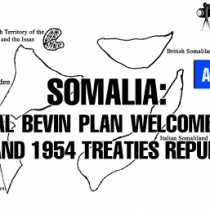


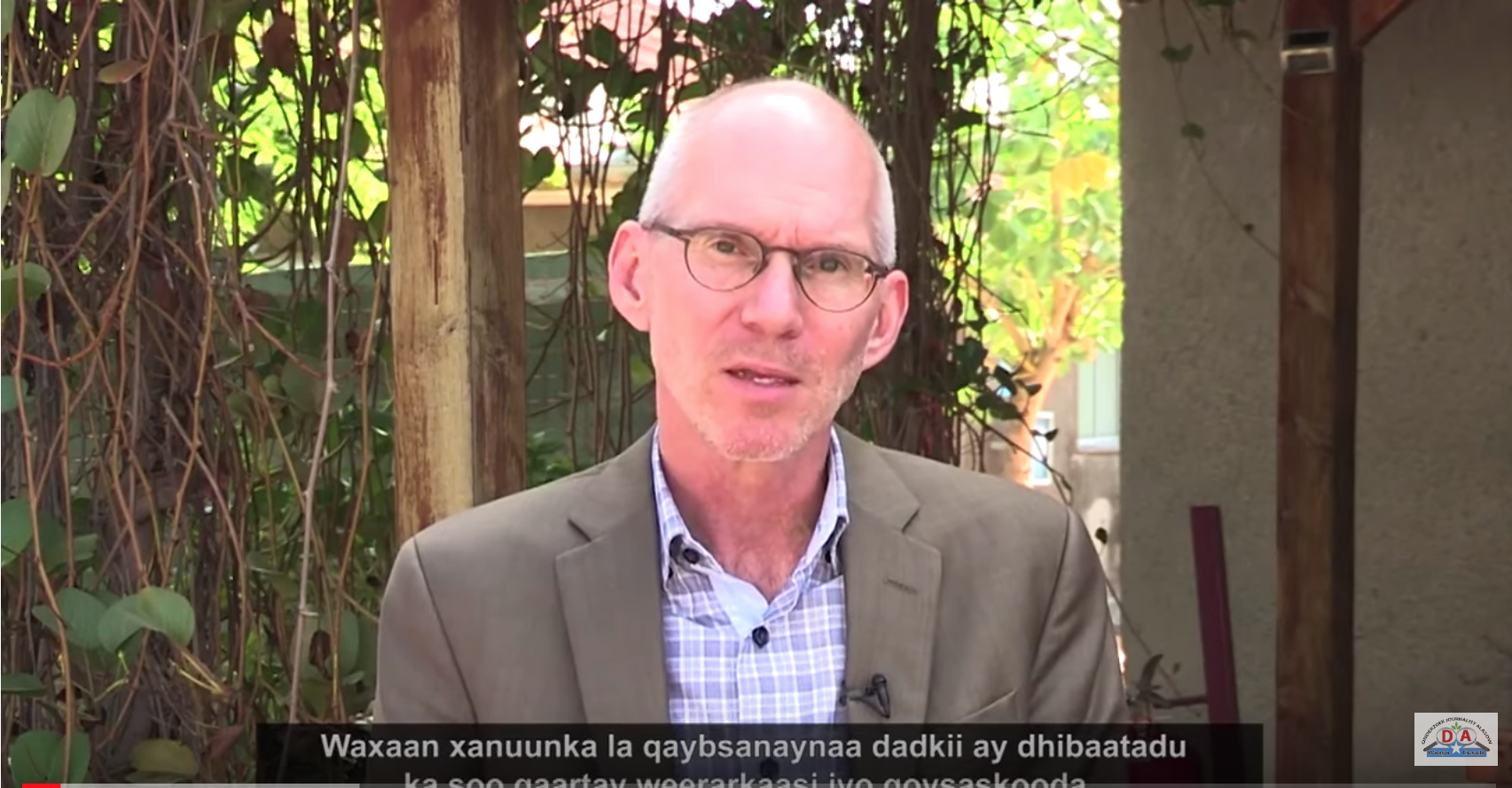
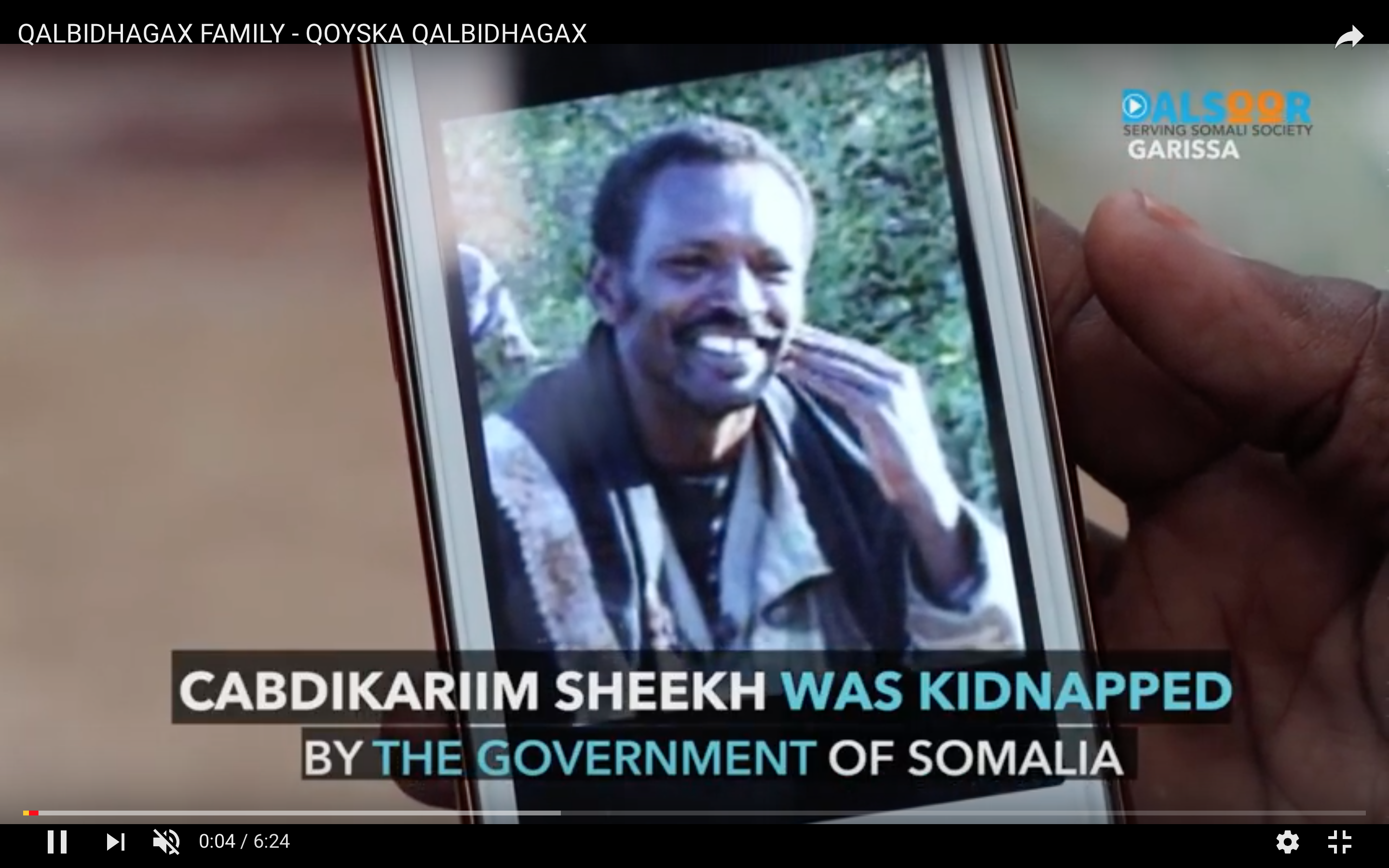
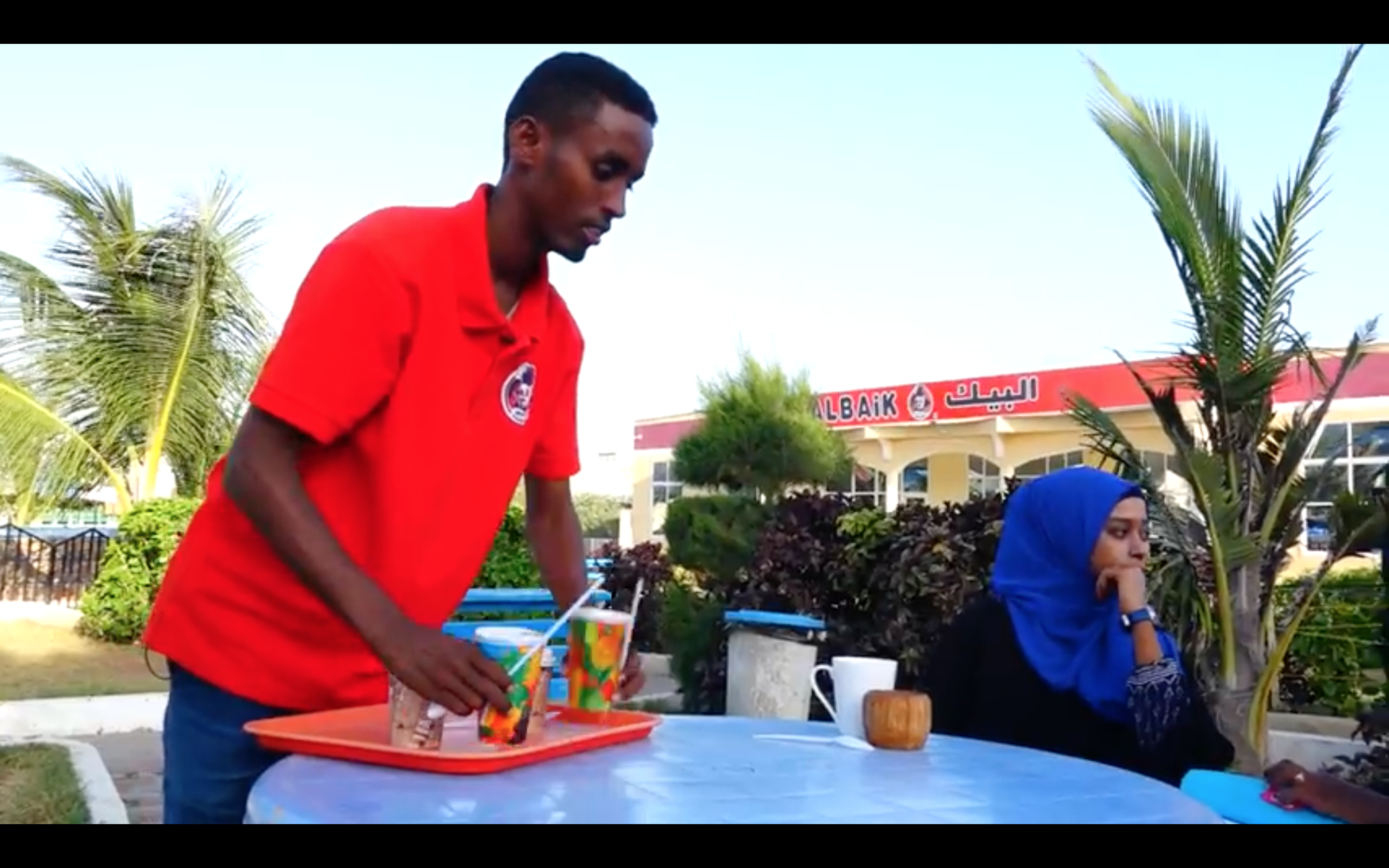
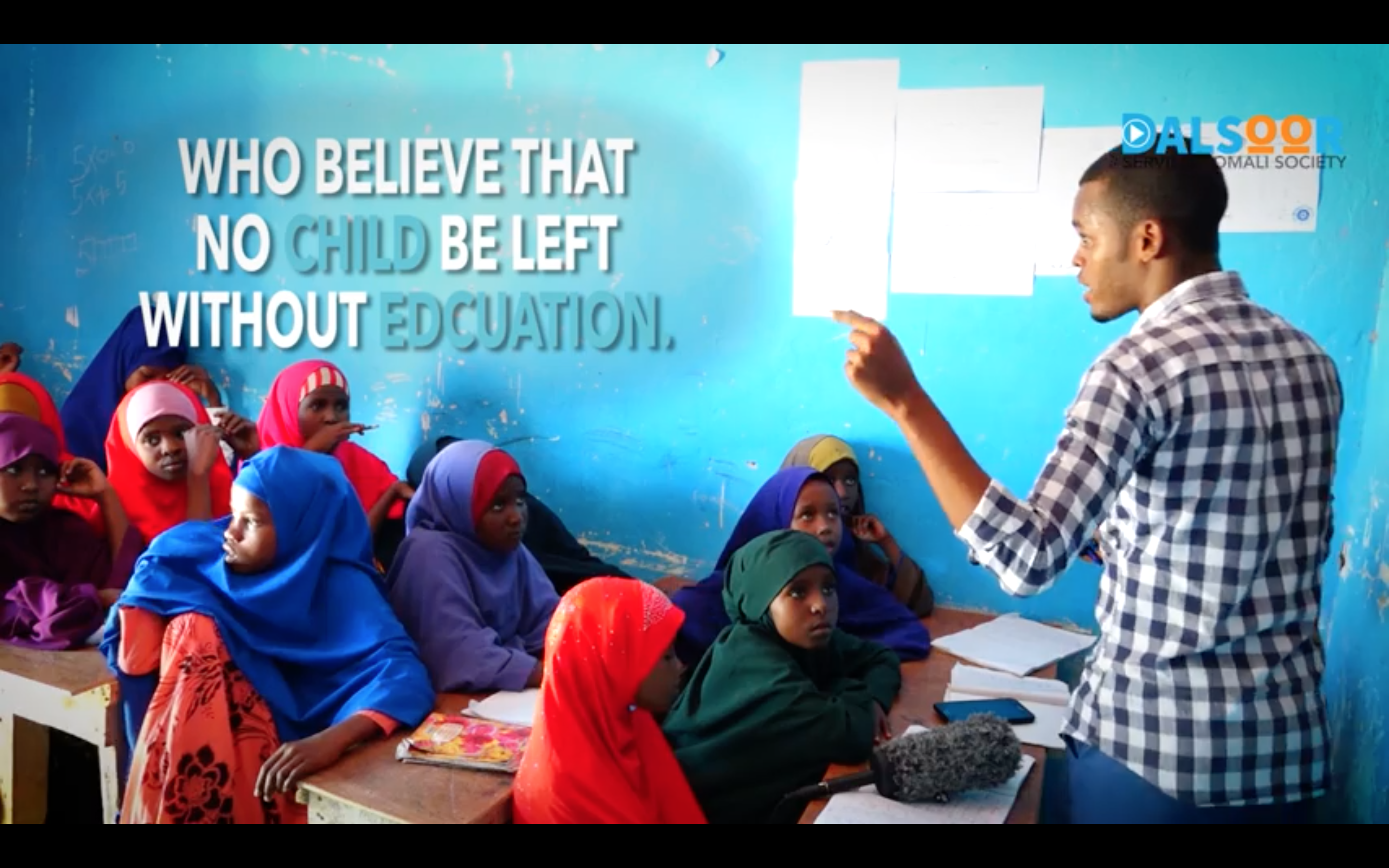
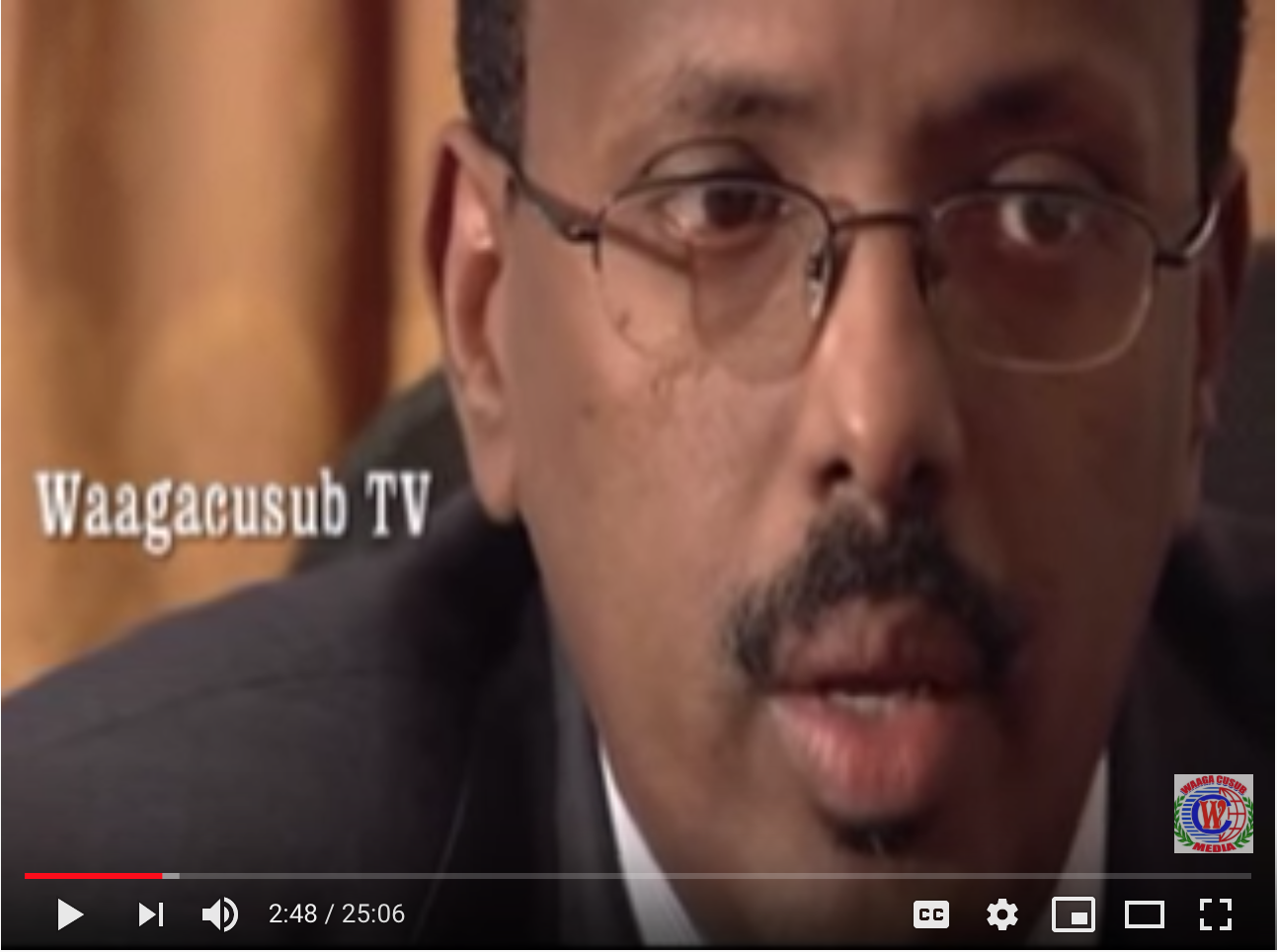

Somalia: Original Bevin plan welcomed and 1897 and 1954 treaties repudiated
By Ambassador Mohamed Osman Omar